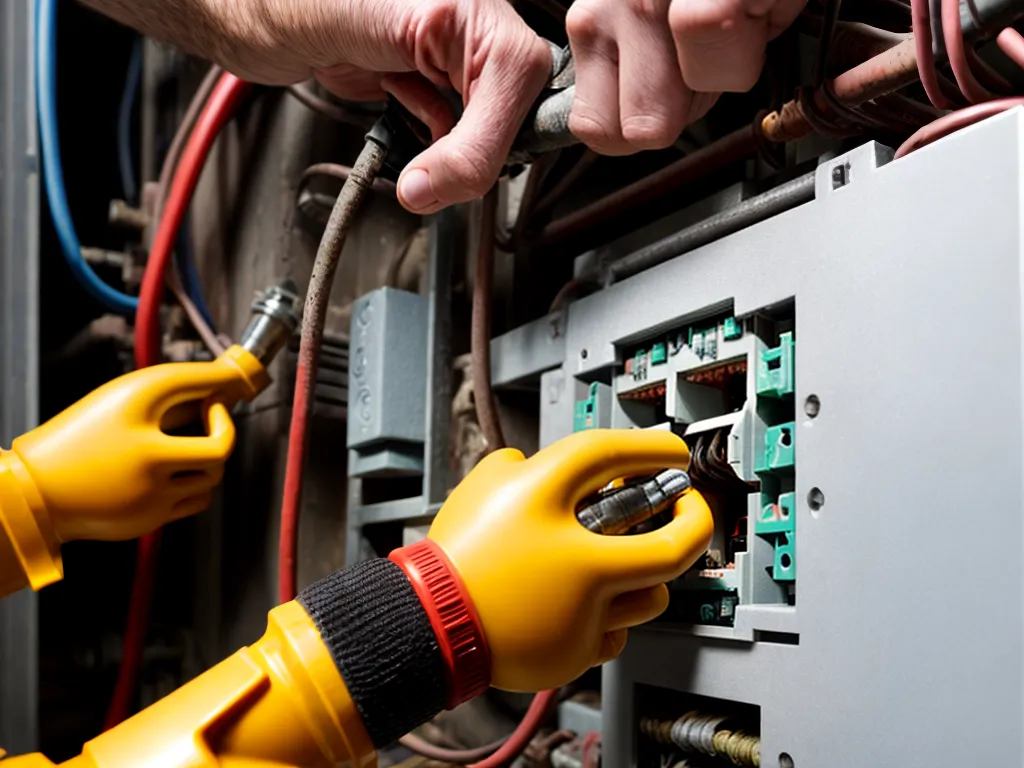
Overlooked Methods to Reduce Electrical System Maintenance Costs
Introduction
As the owner and operator of an industrial facility, I am always looking for ways to reduce costs associated with maintaining my electrical systems. There are several overlooked methods that can lead to significant savings over time if implemented properly. In this article, I will provide an in-depth look at strategies to lower electrical system maintenance costs that are often forgotten.
Perform Infrared Thermography Scans
Performing regular infrared thermography scans of electrical systems is one of the most effective ways to reduce maintenance costs that is often neglected. An infrared camera can detect abnormal hot spots and temperature changes in electrical components and connections. Identifying these issues early allows you to repair them before a more catastrophic failure occurs.
Here are some key benefits of implementing an infrared thermography program:
-
Detect deteriorating connections and faulty equipment before failure. This prevents unplanned downtime and expensive emergency repairs.
-
Prioritize and better plan maintenance activities. Thermography identifies the most severe defects first.
-
Reduce costs by repairing equipment during scheduled shutdowns rather than emergency situations.
I recommend having comprehensive scans conducted annually. This provides enough frequency to catch problems before failure. The investment in this testing pays dividends over the long run by avoiding costly unplanned downtime.
Upgrade Overload Protection
Another overlooked method is upgrading overload protection devices including fuses and circuit breakers. Older electromechanical devices do not protect systems as well from voltage spikes and extreme load fluctuations. Modern electronic trip circuit breakers and current-limiting fuses clear faults faster before major damage occurs.
Key benefits include:
-
Electronic trip circuit breakers clear faults up to 3x faster than electromechanical types. This minimizes equipment damage and downtime.
-
Current-limiting fuses open circuits faster than standard fuses, limiting damage.
-
Advanced protection devices prevent nuisance tripping from voltage spikes. This avoids unnecessary downtime.
While upgraded protection devices have higher upfront costs, the long-term benefits in preventing equipment damage and downtime make the investment worthwhile.
Implement a PM Program for Critical Components
A preventive maintenance (PM) program for critical electrical components can significantly extend equipment life and reliability. Key components that benefit from PM include transformers, motors, generators, batteries, and switchgear.
PM tasks include:
-
Cleaning - Removes contaminants reducing insulation degradation and overheating.
-
Lubrication - Reduces wear and prevents premature breakdown.
-
Inspections - Identify issues early before failure such as loose connections and part wear.
-
Testing - Verify operational integrity and calibration.
The ideal strategy is to schedule PMs based on running hours rather than simple calendar intervals. This accounts for actual equipment usage and wear. PM optimization reduces labor costs by avoiding unnecessary maintenance while maximizing uptime.
Install Power Quality Monitoring
Installing power quality monitoring capabilities allows you to identify issues proactively before equipment damage results. Monitoring provides trend data on key parameters like voltage, harmonics, and transients. When thresholds are exceeded, alarms provide notification to investigate and correct problems.
Benefits include:
-
Avoiding unplanned downtime from power quality disturbances.
-
Early detection of grid voltage issues before electrical equipment failure.
-
Preventing damage to sensitive electronics from harmonics and transients.
-
Improving reliability by addressing root causes of power quality problems.
Advanced metering equipment has become more affordable in recent years. The capital investment pays for itself by preventing even one event of significant unplanned downtime.
Utilize Predictive Maintenance Technologies
Predictive maintenance technologies such as vibration analysis, oil analysis, and ultrasonic detection can identify electrical defects before failure. This allows correcting issues on your schedule rather than from unplanned breakdowns.
Here are key benefits from predictive maintenance:
-
Detect component degradation and defects early.
-
Schedule repairs during planned outages rather than emergency situations.
-
Avoid collateral damage from equipment failures.
-
Extend equipment lifespan through early diagnosis.
-
Reduce maintenance costs by eliminating unnecessary tasks.
The most critical electrical assets should be targeted for predictive maintenance first. Over time, the program can be expanded to other less vital components.
Conclusion
Implementing the strategies outlined in this article will lead to substantial savings over the long run on electrical system maintenance costs. The most impactful steps are performing infrared thermography scans, upgrading overload protection, implementing PM programs, installing power quality monitoring, and utilizing predictive maintenance technologies. The small upfront investments made in these methods pay major dividends by avoiding high-cost emergency repairs and unplanned downtime. Consistently following these overlooked best practices will lead to electrical systems with higher reliability, availability, and cost-efficiency.